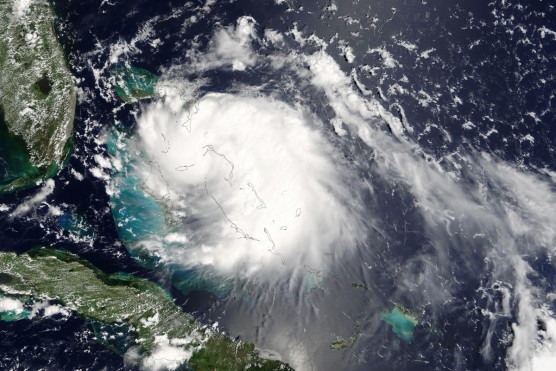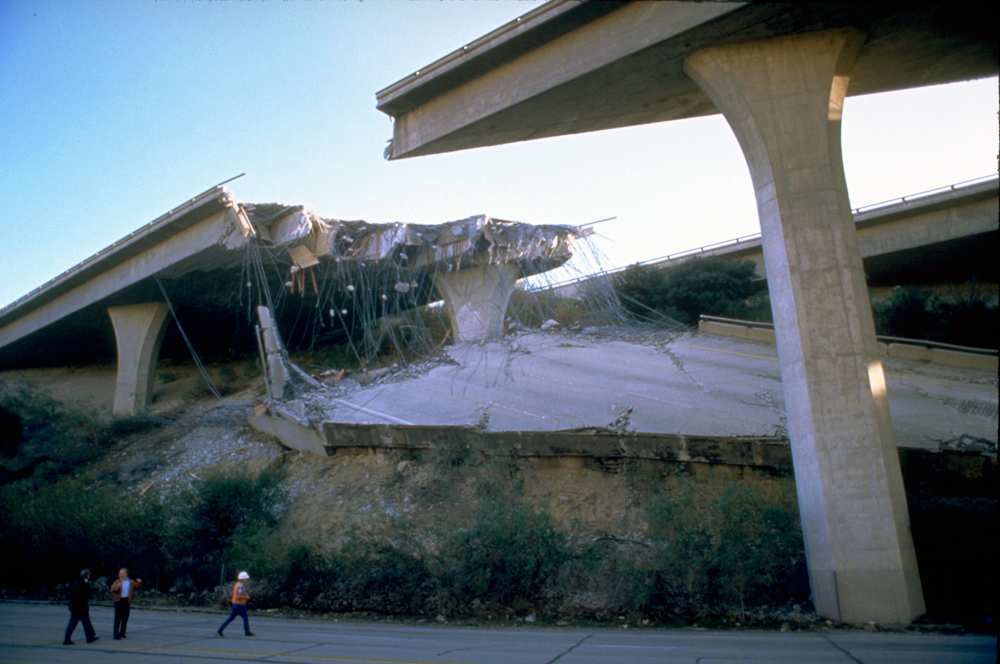By Jim Garamone DoD News Features, Defense Media Activity
[DoD News, Aug. 28] – Forecasters said the hurricane would be bad, but no one expected a Katrina.
Hurricane Katrina hit the American Gulf Coast on Aug. 29, 2005, causing initial destruction from Texas to Florida. It wreaked such damage over such a large area that it changed the way the U.S. government responds to disasters.
According to the National Hurricane Center Katrina was directly responsible for around 1,200 deaths, making it the third most deadly hurricane in American history. It caused $108 billion in property damage, making it the costliest hurricane to strike the U.S.
DoD personnel were in the middle of rescue and recovery efforts for weeks and months after the storm hit.
More than 60,000 members of the U.S. military forces were on the ground, first saving, then sustaining lives.
An Enormous Effort
It was an enormous effort with 18,000 active duty service members joining 43,000 National Guardsmen that focused on Katrina relief operations.
And they were needed. When Katrina hit, it caused a storm surge that inundated whole coastlines, according to National Hurricane Center Service measurements. The storm had sustained winds of more than 120 mph. Portions of Louisiana and Mississippi received 15 inches of rain.
Katrina knocked out power and the communications grid crashed. Bridges, underpasses and roads were all closed. Flooding forced relief personnel to detour for miles.
Huge Storm
The size of the storm caused its own set of problems. The storm surge in Mobile Bay — fully 70 miles east of where Katrina hit land — was still between 12 and 16 feet. Hurricane force winds lashed the Florida Panhandle.
Typically, hurricanes lose force quickly once striking land. Not Katrina. Tornadoes and rain lashed inland areas up into Georgia. Hurricane Katrina affected over 93,000 square miles of the United States, an area almost as large as Great Britain and left an estimated five million people without power, according to the Federal Emergency Management Agency.
Levees protecting the city of New Orleans weren’t high enough with the storm surge overtopping some of the protective berms, and breaching others. At a U.S. Senate hearing after the storm, Army Corps of Engineers officials said there were 55 breaches in the levee system protecting the city.
New Orleans Residents Experience the Storm
New Orleans officials estimated that 80 percent of the population evacuated, but that still left between 50,000 and 60,000 people who were hunkering down in their homes or in “last-chance” shelters like the Superdome. The levee failures flooded about 80 percent of the city. Some 26,000 people who had taken refuge in the Superdome were surrounded by water.
The city also sustained wind damage. The Hyatt Hotel in downtown New Orleans had almost every window blown out on the north side of the building.
The Mississippi coast was devastated. Pass Christian, a pretty town along the Gulf Coast, disappeared. The storm surge and winds scoured the town leaving nothing but concrete slabs where brick homes once stood. The surge picked up whole section of a bridge that carried Route 90 and deposited the huge concrete structure 200 to 300 meters inland. Strangely, the other two lanes of the bridge remained in place. More than 80 percent of the structures in Pass Christian were destroyed or rendered uninhabitable, according to local officials who had set up a headquarters in a relatively unscathed gas station.
In Biloxi the surge picked up freight train cars full of chicken and the winds broke them apart. For weeks, the smell was something to behold.
Seabees based in Gulfport, Mississippi, began work with their base essentially underwater.
Rescue Efforts Commence
U.S. Coast Guard and National Guard personnel moved in as soon as conditions allowed. Coast Guardsmen were the first on the scene with any kind of organization. Coast Guard helicopters skittered across the city rescuing people from rooftops, from flooded streets and providing the eyes for those following in their wake. The Coast Guard helicopters were soon followed by Coast Guard boats. The airport in Mobile became the world’s largest Coast Guard base with choppers from around the service flying missions. Overall, Coast Guard personnel rescued 33,544 people during Katrina operations, according to their records. For its response, the Coast Guard received the Presidential Unit Citation.
National Guardsmen tried to move into the city even as the winds were blowing and the rain was falling. Fallen trees and flooded roads stalled their progress, said Guardsmen. Many of the Guardsmen had lost their homes, yet they were heading out to help others. There was confusion about what powers Guardsmen had and who they reported to.
In New Orleans order had broken down. Shortly after the hurricane passed looting began and reports out of the city mentioned everything from murder to rape to carjackings. Later investigations found the reports were exaggerated, but it was no exaggeration that the city was in dire straits.
Multi-Service Effort
National Guard forces entering the city conducted humanitarian, search-and-rescue, evacuation and security missions, officials reported. While Coast Guard, Air Force and Army helicopters sought out those trapped in attics or roofs, National Guardsmen and police conducted house-to-house searches. The doors marked with an X and information in the various quadrants saying who searched the house, what was found and when the search was conducted, soon became a familiar sign.
The Guardsmen were soon joined by active-duty soldiers and Marines.
Navy and Coast Guard vessels sailed up the Mississippi River to lend the help their crews and facilities could provide. In time, 28 ships — 21 Navy and seven Coast Guard — were stationed in the affected region.
Coordinating the DoD effort was Army Lt. Gen. Russel L. Honore, who commanded Joint Task Force Katrina. Honore, a Louisiana native, became a legend for his gruff, no nonsense approach. “He got things done,” then-New Orleans Mayor Ray Nagin said of Honore.
Getting Back to Normal
The Army Corps of Engineers set about mending the breached levees and getting the pumping stations that usually kept the below-sea-level city dry working again. It was October before the floodwaters were pumped out.
There are still signs of Katrina in New Orleans and along the coast. Then-President George W. Bush said recovery would take years, and he was right. A decade on, the area is still rebuilding. New, deeper levees were emplaced, new water control apparatus erected. Some areas were elevated, while others were cleared. It remains a work in progress.
Katrina has served as a warning against complacency, Federal Emergency Management Agency officials said. It is an example of why people should take evacuation orders seriously and be prepared for emergencies.
The loss of life and the damage from Katrina was so severe, that the National Weather Service officially retired Katrina from the Atlantic hurricane naming list.

(September 3, 2005 New Orleans) — Evacuees and patients arive at New Orleans airport where FEMA’s D-MATs have set up operations. Photo: Michael Rieger/FEMA

Hurricane Katrina damage. In New Orleans flood waters covered large portions of the city.
Health & Human Services
10 Years After Hurricane Katrina: Are You Better Prepared for Disaster?
Few hurricane names conjure imagines of such severe devastation like the name Katrina. Ten years ago Hurricane Katrina, followed shortly by Hurricane Rita, devastated communities along the Gulf of Mexico, mostly famously New Orleans. The Louisiana Department of Health and Hospitals estimated that more than 1,000 people in the state died as a result. The disaster spotlighted gaps in our nation’s preparedness, including in our ability to mitigate the health effects of such a major disaster.
In the wake of these storms, Congress created the Office of the Assistant Secretary for Preparedness and Response (ASPR) within the U.S. Department of Health and Human Services (HHS) to help prevent, prepare for and respond to the adverse health effects of public health emergencies and disasters. A decade later, we are keenly aware of the increasing frequency and severity of hurricanes and other extreme weather events associated with climate change. Together with partners within and outside the federal government, we are making tremendous progress in planning for a myriad of physical, social and behavioral health needs these disasters create.
While we’re ready to respond and help communities recover, protecting health and saving lives goes beyond what government agencies can do alone; the whole community has to be ready and must work together.
ASPR and other government agencies have adopted standard systems to coordinate and communicate with well-established roles and responsibilities. We have new policies, procedures and frameworks in place based on evidence and data rather than anecdotes. We have systems in place to develop and distribute vaccines and medications in public health emergencies. With our funding and guidance, communities have established hundreds of coalitions that bring together more than 14,000 public health and healthcare partners to prepare for and respond to emergencies.
To make sure your community can bounce back fast, you need to take action, too.
One of the easiest things you can do is determine in advance how you’ll communicate and reconnect with your family and friends after disasters strike, especially if they have health conditions. If you need help, who can you count on? Who’s counting on you? Is there someone outside the area everyone can call or text to check in? Do you have a meeting place established if you can’t get through by phone? The National Library of Medicine and others offer free mobile apps you can use to find each other, too. Talk through what to do with your family and friends.
As you think through how to reconnect and reunite after a disaster, consider the steps you need to take to protect your health. Do you have an electronic health record or copies of your prescriptions? Do you or someone you love use electrically-powered medical equipment like an oxygen concentrator, ventilator or wheelchair? (If so, plan to charge the back-up battery before a storm strikes, and plan where to go if the power is out for a long period of time.) If you use dialysis, where will you go if your facility is closed and how will you get there? A simple plan can keep you or the person you love out of the hospital. It can even save a life.
Be sure your plan works. Test it with an emergency drill. National Preparedness Month and the National Day of Action on September 30 are great times for an emergency drill with your family, friends, and neighbors, at your place of worship or business. You can join the 18.7 million people who are already participating in drills this year by registering your activity as part of America’s PrepareAthon!
Katrina, and so many disasters since then, taught us that every disaster can impact health. Ready.gov can give you great ideas on how to protect your health in disasters, and you can find additional tips on HHS’ public health emergency website.
Don’t wait. Communicate. Make your emergency plan today.
Like this:
Like Loading...
Related





 Tweet This
Tweet This Facebook
Facebook Digg This
Digg This Bookmark
Bookmark Stumble
Stumble RSS
RSS




























REAL NAMES ONLY: All posters must use their real individual or business name. This applies equally to Twitter account holders who use a nickname.
0 Comments
You can be the first one to leave a comment.